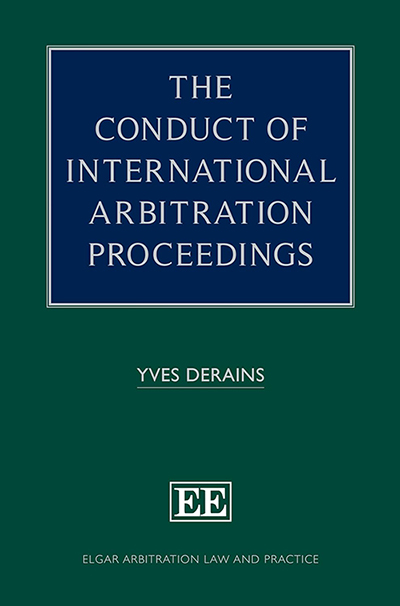CLInt – Book Reviews – August 2025

The Conduct of International Arbitration Proceedings
Author: Yves Derains
Published by: Edward Elgar Publishing Limited, 2024
ISBN: 978-1-80088-255-3
338 pages, £165
Publication date: 20 December 2024
Reviewed by Thayananthan Baskaran
The Conduct of International Arbitration Proceedings provides a comprehensive and thoughtful exploration of how arbitral proceedings should be conducted, from the constitution of the tribunal to the issuance of the final award. The book calls upon arbitrators to rethink the standard practices they have become accustomed to. At its core, it challenges the tendency towards the ‘standardisation’ of arbitral procedure and presents a call for deliberate, tailored arbitration practice, rooted in fairness, efficiency, and cultural neutrality. Drawing on decades of arbitral experience, the author questions whether the trend towards procedural standardisation has sacrificed the flexibility and case-specific pragmatism that international arbitration was originally designed to embrace.
Another key section addresses the practical reality of arbitrator appointment. The author notes that, while parties often retain the right to nominate their own arbitrators, this freedom is not without controversy. He also acknowledges the criticisms surrounding unilateral appointments – or what are sometimes referred to as ‘beauty contests’ – as well as the limits that ought to be imposed on them to present a delicate balance between party autonomy and procedural integrity.
The author explores the arbitrator’s mission, going beyond the usual definitions of rendering enforceable awards, and suggests that the arbitrator must manage the entire case lifecycle with procedural integrity at every step. The author challenges the notion that arbitrators are purely passive adjudicators, suggesting a more active role that includes the option in some cases to assist parties towards amicable solutions: equally raising the fact that such involvement must be exercised with restraint and with full awareness of the risks it poses to perceived impartiality.
The author does not shy away from identifying the flaws in the standard model of arbitration. Many proceedings, he argues, have become overly rigid, protracted and expensive: a consequence of excessive formalism, broad document production and unnecessary duplications in written submissions. In short, the argument put forward is that what was once intended as a harmonised procedural structure has, in many instances, become a straitjacket. While institutions have sought to harmonise arbitral processes across legal cultures, the result is often unnecessarily prolonged and costly proceedings. The author then offers viable alternatives to this rigid system, such as early procedural conferences, limited witness examination, bespoke scheduling and case-management tools designed to avoid procedural bloat. He concludes that there is no one-size-fits-all model and emphasises that tailor-made proceedings remain the best answer to the procedural complexities of international arbitration.
The author addresses virtual hearings, acknowledging the shift during the Covid-19 pandemic. He strikes a balanced tone, recognising the benefits of virtual hearings, such as savings in cost and greater accessibility, while also noting that virtual hearings may be inappropriate when witness credibility or complex party dynamics are at issue.
Finally, the author concludes with a consideration of the arbitral award. The discussions on deliberation, dissent and award scrutiny are well presented and practical advice is offered on drafting clear, enforceable awards. This serves as an excellent checklist for arbitrators.
In conclusion, the book presents a pragmatic and experienced perspective on the procedural life cycle of an international arbitration. What stands out is its grounding in real-world arbitration practice, making it a valuable resource.